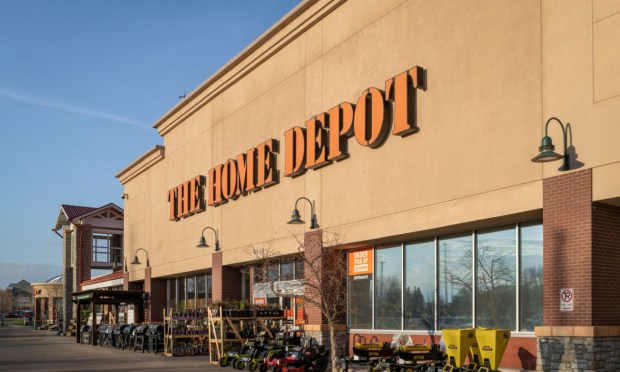Home Depot’s Sales Fall as Consumers Hold Off on Renovations

The Home Depot missed Wall Street revenue expectations for the second quarter in a row.
The home improvement retailer on Tuesday (May 16) reported earnings that showed sales of $37.3 billion, down 4.2% year over year.
It marked the second time in as many quarters that the company came in below analysts’ expectations, as consumers put off big renovation projects and appliance purchases.
The revenue miss was also Home Depot’s largest in 20 years, CNBC reported. Chief Financial Officer Richard McPhail told the network the company had expected this year would be one of moderation following a wave of home improvement projects during the pandemic.
“The state of the homeowner is that they’re very healthy,” he said. “They have healthy balance sheets. They have healthy incomes. But I do think — and our professional customers tell us they hear this from their customers — there is that shift, even if it’s temporary from larger projects into smaller ones.”
Also driving down sales were lumber deflation and unfavorable weather, Home Depot President and CEO Ted Decker said in a news release.
McPhail said the company would update its guidance based on those factors, as well as “further softening of demand relative to our expectations, and continued uncertainty regarding consumer demand,” per the release.
Where the retailer had once expected sales to be flat, it now projects sales and comparable sales to dip between 2% and 5% versus last year.
Home Depot had provided a similarly muted outlook last quarter, when it missed revenue expectations for the first time since 2019.
The drop in sales comes as consumers are dialing back discretionary spending in the face of ongoing inflation.
“Discretionary retailers have been among the first segment to suffer as inflation continues to force customers to cut nonessential spending,” PYMNTS wrote last month.
Research by PYMNTS has shown that these retailers were already feeling a pinch as consumers have cut back their spending on products they determine are non-essential. At the very least, these consumers are reconsidering who their go-to merchants are, and the price points that they’ll accept.
Fifty-six percent of U.S. retail shoppers reported switching merchants in the name of lowering costs, while prices help influence the choice of a large retailer for 67% of shoppers.
For all PYMNTS retail coverage, subscribe to the daily Retail Newsletter.

